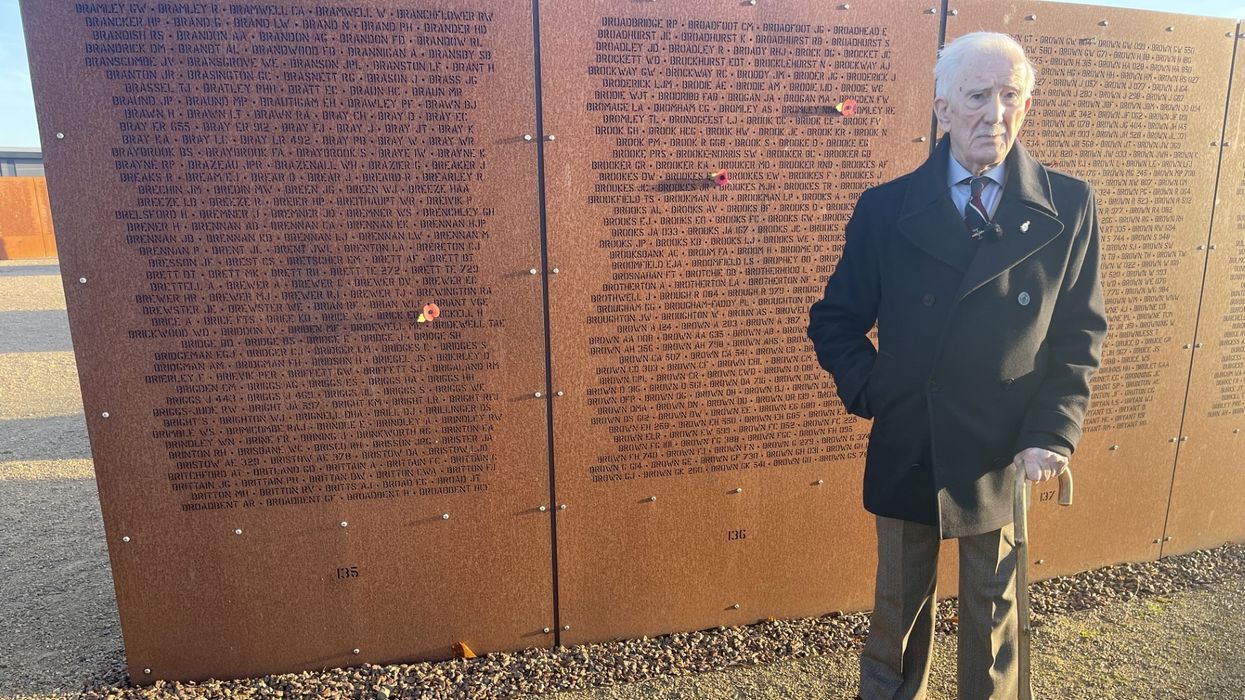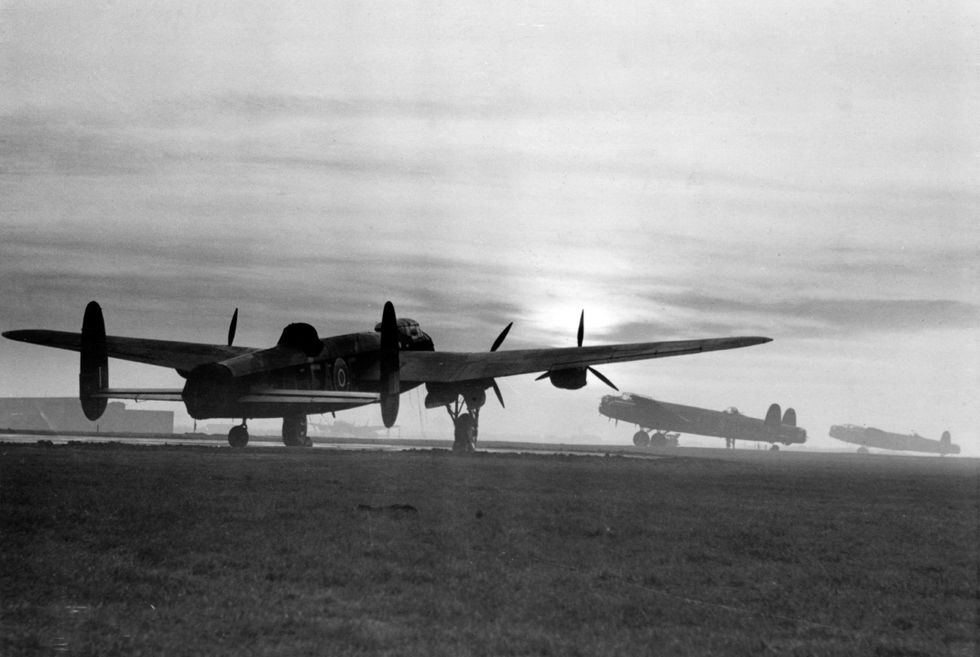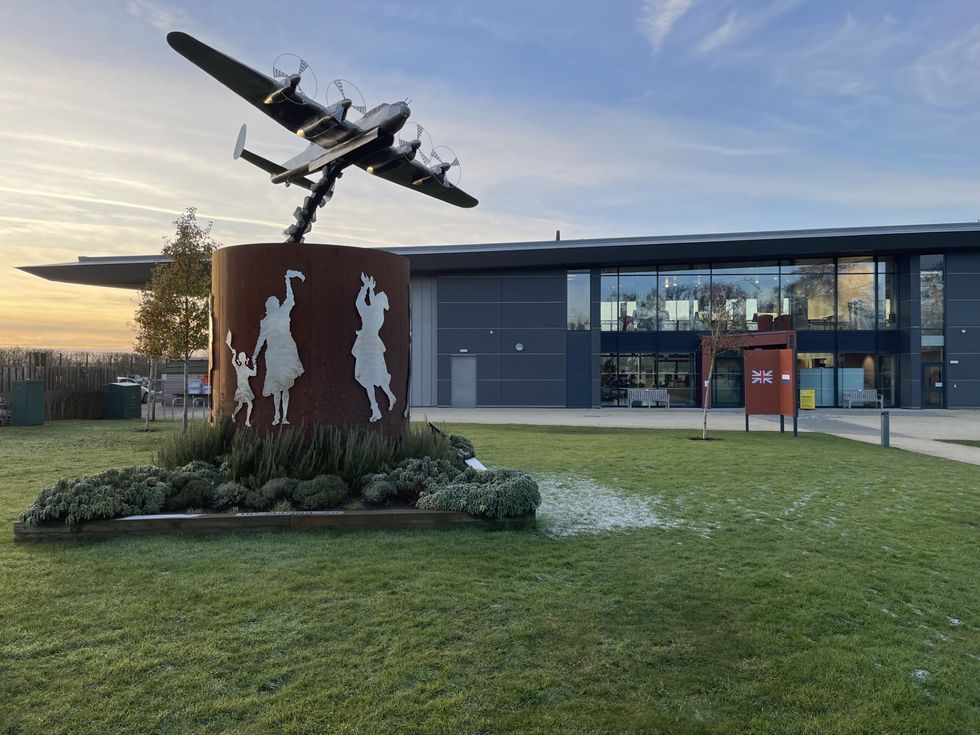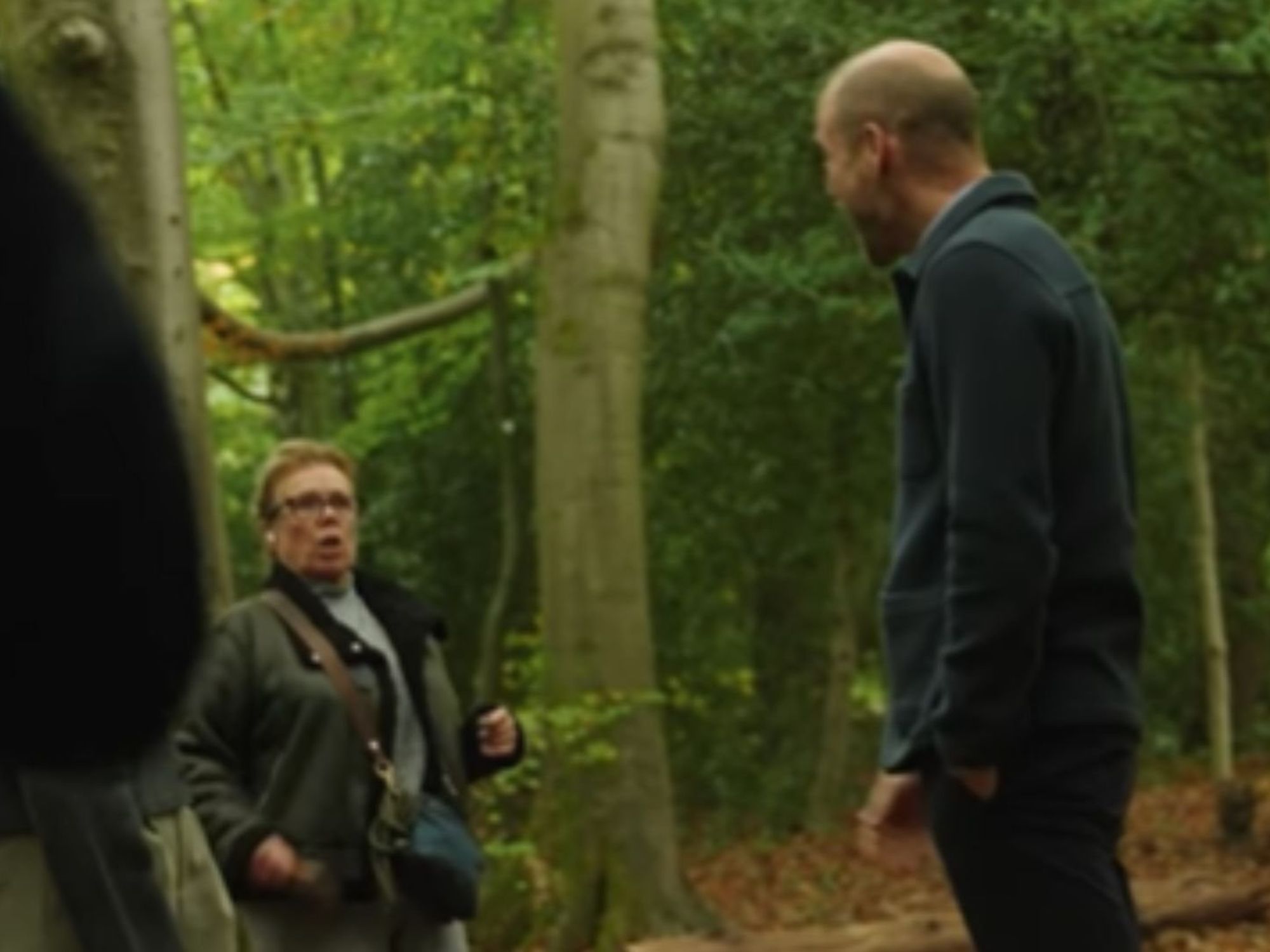WW2 veteran, aged 101, remembers bomber crew sacrifice

WW2 veteran, aged 101, remembers bomber crew sacrifice
|GB News

By Will Hollis
Published: 10/12/2023
- 06:00Updated: 10/12/2023
- 08:02Eddie Hume was the sole survivor when his plane was hit over Belgium. He willingly volunteered for the most dangerous job in the armed forces – flying in a Lancaster bomber.
Don't Miss
Most Read
A 101-year-old RAF veteran has placed poppies on a memorial wall engraved with the names of his bomber crew who died when their plane was shot down after a bombing raid on Germany.
Warrant Officer Eddie Hume, an RAF Navigator, was the only person of the seven-man bomber crew to survive the attack above the Belgian and Dutch border.
The men, part of 514 Squadron, were returning to RAF Waterbeach in Cambridge following a mission to bomb the German city of Aachen on the 11th April 1944 when their Avro Lancaster was attacked by an enemy fighter plane.
"We were in a bit of trouble," said Eddie.
 Lancaster Bomber | RAF
Lancaster Bomber | RAF"The inner engine caught fire and the port wing tip fell off and the aircraft went into a spin."
Eddie, who lives in Worksop, survived by parachuting from the burning plane, but broke his leg on landing. His friend, Flt Sgt John Moulsdale, also escaped through the bomber hatch, but without a parachute and died.
No other crew members could escape.
The bodies of Sgt Clive Walter Banfield, Flt Sgt Reginald Ernest Bromley, Flt Sgt Clement Herbert Henn, Sgt Patrick Hughes, Flt Sgt John Russell Moulsdale, Plt Off Noel William Faulkner Thackray, are buried at Heverlee War Cemetry in Belgium.
LATEST DEVELOPMENTS:

Volunteers L to R Nick Sharpe, Bob Chatterton, Phil Davies, Dave Thorne, Chief Executive Nicky van der Drift, Losses Archivist Dave Gilbert
|GB News
Their names are amongst 58,000 others remembered at the International Bomber Command Centre in Lincoln.
Eddie spent the rest of the war as a prisoner.
"I moved from Belgium, across Germany into various camps. Just as I settled down the Russians advanced," said Eddie.
He was put into a "long march" amongst veterans from Dunkirk to avoid the frontline before being rescued by a unit of Americans.

International Bomber Command Centre in Lincoln
|GB News
Eddie, like all members of Bomber Command, was a volunteer. The Command has the highest casualty rate across the armed forces at 44 per cent. The average age of death was 23.
The IBCC, which officially opened in 2018, is building a Losses Database to archive facts about the men and women who served in Bomber Command between 1936-1968.
Visitors can search by names or serial numbers to discover facts about the people who died protecting Britain and its allies.
Losses archivist and trustee Dave Gilbert has volunteered more than 12,000 hours to transform the database. In the beginning, he simply used Lincoln Cathedral’s roll of honour which contained Second World War casualties from the county.

Losses archivist and trustee Dave Gilbert
|GB News
"You soon realise that it isn’t just data - it’s people," said Dave. "Every one of these names is a life cut tragically short. It’s essential that we remember what they did because they were all volunteers. Not a single one was conscripted."
The IBCC has just received the King’s Award for Voluntary Service, the equivalent of an MBE for an organisation.
Nicky van der Drift, Chief Executive of the International Bomber Command Centre, said:
"Volunteers have been the bedrock of this project. We have over 400 volunteers from 9 different countries and they are literally involved in every aspect of what we do."
The history of Bomber Command is contentious because of the extent of damage to civilians during raids. The IBCC aims to highlight all aspects of the Command's wartime role to visitors.










